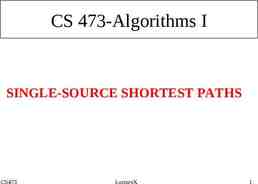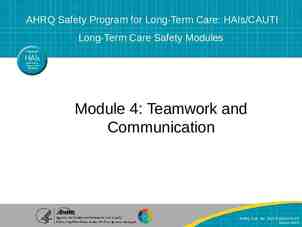Department of Language & Literature MLA 9 TH EDITION Created by APSU
28 Slides223.00 KB

Department of Language & Literature MLA 9 TH EDITION Created by APSU Writing Center

THE MODERN LANGUAGE ASSOCIATION OF AMERICA Used in many disciplines English Studies – Language and Literature Foreign Languages and Literature Literary Criticism Comparative Literature Cultural Studies Latest updated edition is the 9th edition, dated 2021

General Formatting Guidelines Margins All margins: 1-inch Paragraph Settings Left-Aligned Indent paragraphs ½ inch. Double space throughout the entire paper. Set default settings in Microsoft Word to 0 and check the box “Don’t add space between paragraphs of the same style.” Font Type and Size Easy readable type face Times New Roman is one example Size should be between 11 & 13 Use one space after the end of each sentence.

Title 1-inch from the top left of first page & flush with the left margin Type name, instructor’s name, course number, and the date On separate double-spaced lines Center the title Do not italicize or underline the title

Running Head and Page Numbers Last name and page number at the top right-hand corner of the page Number all pages consecutively throughout the paper

Example of Running Head Last Name 1

The Title On a new double-spaced line, center the title Do not italicize or underline the title Put it in quotation marks or boldface or type it in all capital letters Do not use a period after your title

Title Example Last Name 1 Your name Instructor’s Name Course Name Date (Day Month Year) The Title of Your Paper

The Body Of The Paper The body of the paper should be on the same page as the title After the title start a new line and use the TAB key to indent ½ inch Do this for every new paragraph

Example of an MLAStyle Paper

Documenting Sources Citing: giving credit to sources of ideas, facts, graphics, tables, etc., that are not one’s own. Plagiarism: failure to cite, even accidently Using other’s work Using your previous work Three types of citations for MLA format: Citation in Prose Parenthetical or in-text Works Cited page

Citation in Prose Citation in prose is citing the author within the body of the paper. Examples: Naomi Baron broke new ground on the subject. According to the article “Bhakti Poets,” female bhakti poets “faced overwhelming challenges through their rejection of societal norms and values.”

Parenthetical (In-text) Citations Parenthetical citing is citing sources within the body of the paper. MLA requires the author’s/authors’ last name(s) and/or page number If the source is not paginated, only the name/s are required. Examples: (Baron) (“Bhakti Poets”) (Baron 194)

Parenthetical Citations One author (Baron 194) Two authors (Lemery and Auerbach 4-5) Three or more (Nickerson et al. 135) “et al.” is used for every use of the citation.

Parenthetical Citations If no author is identified, use the first few words of the title in place of the author. If no date is provided, use "n.d." in place of the date. Example: Changes in Americans' views of gender status differences have been documented (“Gender and Society,” n.d.).

Parenthetical Citations Parenthetical citations in MLA 9th ed. are to be in the following format: (Last name page number) Zombies eat brains (Smith 87). Or According to Smith, zombies eat brains (87). What appears within the sentence does not appear in the parenthetical citation.

Parenthetical Citations Use “and” if the authors’ names are in the sentence. Others, like Jay Lemery and Paul Auerbach, note that doctors have not yet adequately explained the effects climate change will have on human health (4-5). Use the ampersand (&) if their names are in the parenthetical citation. Others note that doctors have not yet adequately explained the effects climate change will have on human health (Lemery & Auerbach 4-5).

Works Cited Page Cited sources in the body of paper need to be listed on the Works Cited page. The Works Cited page: a bibliographical list of all sources used in the body of the paper goes on a separate page of its own, even if there is space left after the closing paragraph numbered as part of the entire paper as the last page of the document

Formatting the Works Cited Page Maintain page numbers, margins, and spacing. Label and center the top of paper with the heading: Works Cited (multiple sources) Work Cited (for one source) Alphabetize sources by the first element in the entry. There is a button in Microsoft Word for this function (the “Sort” tool) in the Paragraph settings above the Paint Can tool. In the dialogue box, choose sort by “Paragraphs” and set the type to “Text.” “Text” only sorts by letters, so sources that begin with punctuation have to be moved manually.

Formatting the Works Cited Page Use hanging indents for each entry. First line of each entry is flush left against margin. Second and subsequent lines are indented one-half inch, a.k.a. hanging indent To do this, highlight your sources, right-click, choose “Paragraph ,” go to “Indentation,” find “Special,” and set it to “Hanging.”

Works Cited Page If listing by the author’s name author’s name is inverted (last name, first initial, middle initial) Example: Berry, T. J. If a work has more than one author Invert all the authors’ names. Follow with a comma; insert the & before name of last author. Example: Berry, T. J., Format, O. K., & Modern, M.

Basic Structure For Citing Works Formatting depends on the type of source. All basic formats begin with author’s last name and first initials title publisher publication date location

Citing: Book Author’s last name, first and middle initial. Title of book. Publisher’s name, year Last Name 4 Work Cited Mantel, Hilary. Wolf Hall. Picador, 2010.

Citing: Website Author’s last name, first name. “Article title.” Name of Website. Date Published, URL Author’s last name, first name. “Article title.” Name of Website. Retrieved Date from URL The retrieved from date is only needed when there is no published date for ALL electronic sources. Last Name 4 Work Cited Deresiewicz, William. “The Death of the Artist—and the Birth of the Creative Entrepreneur.” The Atlantic, 28 Dec. 2014, theatlantic.com/magazine/archive/2015/01/ the-death-of-the-artist-and-the-birth-ofthecreative-entrepreneur/383497/.

Citing: Journal Article Accessed Online Author(s) last name, first and middle initials. “Title of article.” Name of Journal, vol. , no. , date published. doi link or (Retrieved from date)URL Last name 4 Work Cited Goldman, Anne. “Questions of Transport: Reading Primo Levi Reading Dante.” The Georgia Review, vol. 64, no. 1, spring 2010, pp. 69-88. JSTOR, www.jstor.org/stable/41403188.

Citing: eBook Author’s last name, first and middle initial. Title of book. E-book, publisher , published year. Last Name 4 Work Cited Silva, Paul J. How to Write a Lot: A Practical Guide to Productive Academic Writing. E-book, American Psychological Association, 2007.

Student Resources For more APA resources, visit the Writing Center’s website: Google “APSU Writing Resources.” Check out the many resources available to you online! https://owl.purdue.edu/owl/research and citation/mla style /mla formatting and style guide/mla formatting and style guide.html https://style.mla.org/

ANY QUESTIONS?






